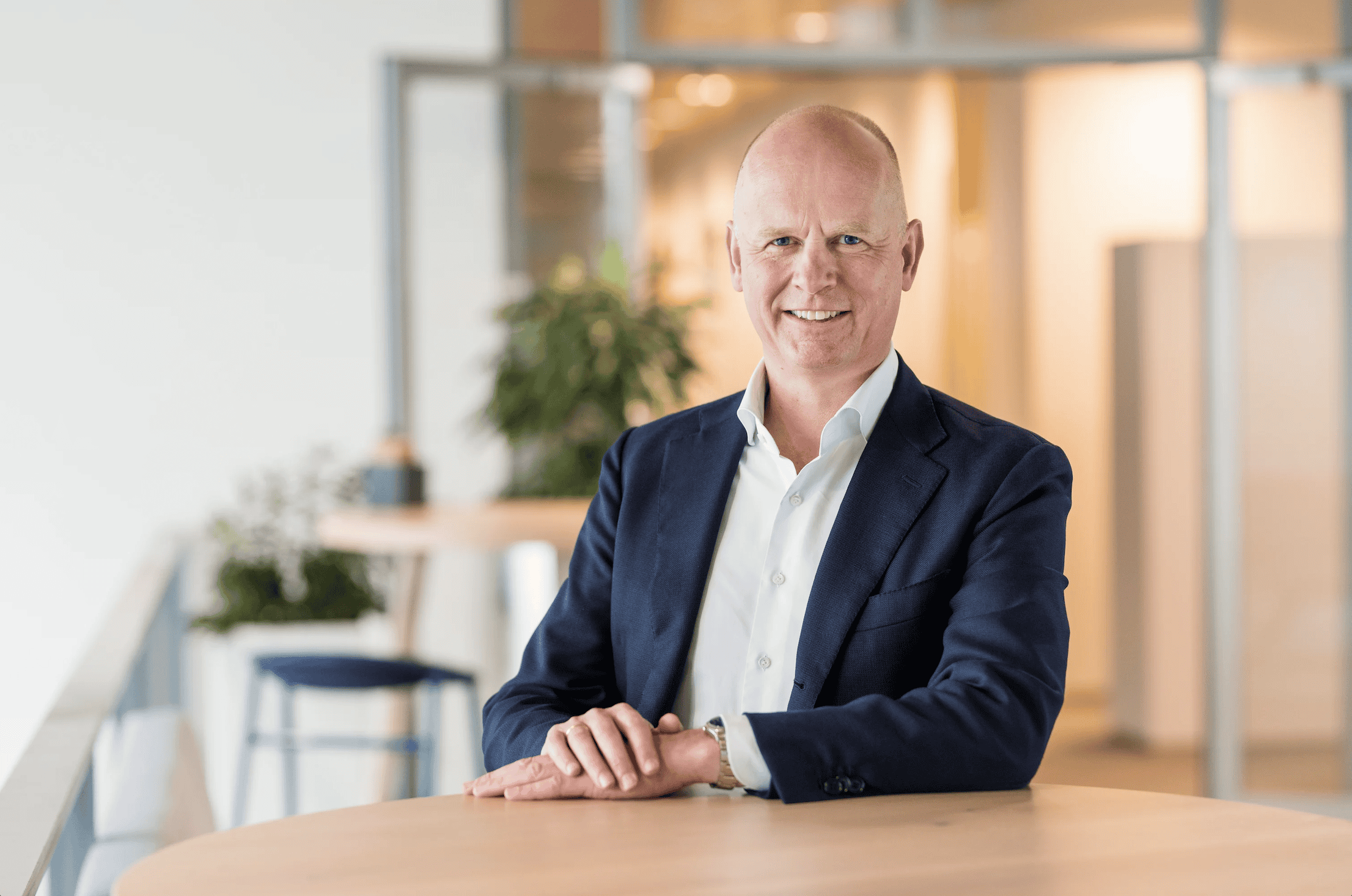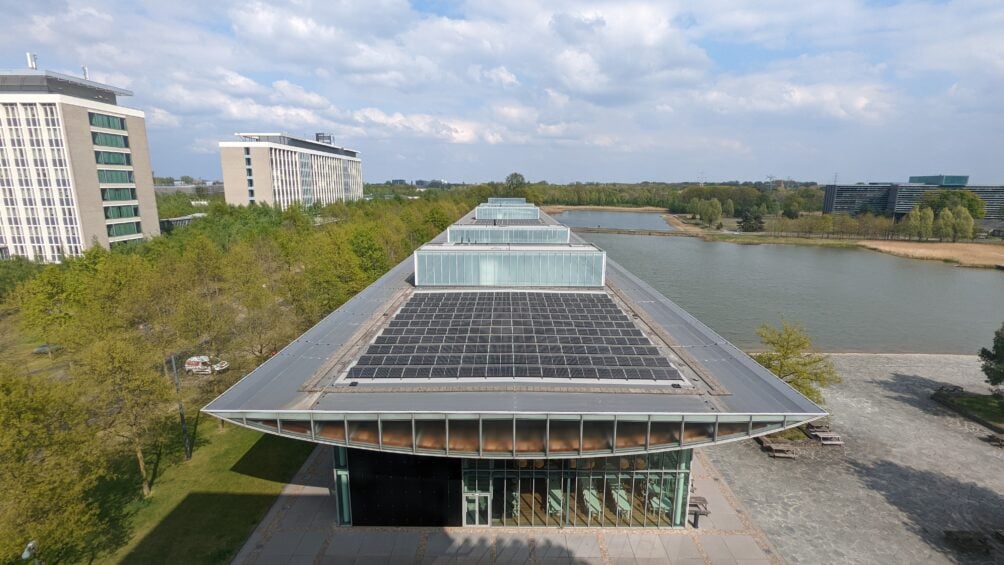
Exactly 25 years ago, Philips decided to open the doors of the NatLab. Despite the success, the electronics company of the time realized that even greater success could be achieved through collaboration not only between its own departments but also with external parties. To celebrate the 25th anniversary of that pivotal moment, this year, the Campus commemorates ‘Rewind & Fast Forward’: by looking back and forward, we can honor the past to forge an even stronger future.
Why should you read this?
High Tech Campus is 25 years old – a reason to look back and forward. We asked the campus director to reflect on the past and future.
Otto van den Boogaard, who became the Campus CEO last year, appreciates this balance: “In a high-tech environment like ours, we naturally tend to look only forward. But a moment like this can help us pause and realize where our roots lie. Forward-thinking guides us all here at HTCE, but we do come from somewhere. Take, for example, the theme of ‘light’. Everyone understands that it originated at Philips, so it’s no coincidence that dozens of our current Campus residents are still working on it today. Sometimes as lasers, sometimes in deep photonics technology, or as a crucial part of lithography, but ultimately, it’s all about light. It’s deeply ingrained in our DNA.”
Open innovation
Van den Boogaard sees these shared roots as a guarantee for the enduring unique character of the Campus. “The concept of open innovation originated here years ago and has grown with us to what it is now. I mean the heart and soul of this place; everything that can thrive only in that powerful interconnectedness.” According to the CEO, this also gives the Campus its typical village square atmosphere, which comes to life abundantly on and around The Strip – the row of buildings where all communal facilities such as shops and restaurants are located – through more or less organized chance encounters.
The Strip wasn’t there immediately. In fact, when the NatLab transformed into a Campus, it wasn’t immediately the signal for the arrival of external parties. That happened around 2003, after which the name “High Tech Campus Eindhoven” was born and became the official title. The establishment of the Holst Centre in 2005 was then the real starting point for Open Innovation. Open Innovation was, and still is, the guiding principle for everyone who felt attracted to the Campus.
Technology = High Tech Campus
Whoever thinks of technology thinks of the High Tech Campus. Two years ago, 3,000 Eindhoven residents were asked which brand first comes to mind when it comes to technology and design. Their answer: High Tech Campus. TU Eindhoven and ASML followed in places 2 and 3.
Philips remained the owner of the terrain for the time being. “That changed in 2012, when it was decided to spin out the Campus, starting a new period,” says Van den Boogaard. “While there were already over a hundred companies established here, in this time period it became a business. With the same goals as in the early days but with much more entrepreneurship to achieve them. On the one hand, there was all the attention to creating the best possible physical environment of buildings and facilities, but at the same time, there was also a sense of the importance of a strong community: people always make the difference.”

Fruitful Discussions
The objectives remain unchanged with the current owners. “There’s still room for around 80,000 to 100,000 square meters to be built, but we’ll also continue improving existing buildings. In doing so, we closely align with the tenants’ needs, for example, by creating more cleanrooms or other technical spaces. It’s a constant puzzle: startups don’t stay small and often need more or different spaces. We’re keen to facilitate that. It’s like playing a game of advanced Tetris!”
Amidst this Tetris game, there should be space for unique needs. “We always want to have a place where organizations and people can connect. The special hubs are also working very well for us in line with our strategy. The AI Innovation Center, the 5G Hub, the Workplace Vitality Hub, and the soon-to-be-opened 3EALITY hub, specifically for spatial web services. We’ll always pay attention to emerging technologies, if only because they attract interesting new parties, which can also benefit existing tenants like ASML, NXP, Signify and Smart Photonics.”
To manage all this, there are regular discussions with other Campuses within the Brainport region. “The aim is to make the pie bigger for everyone, and we’re succeeding, thanks to that collaboration,” emphasizes Van den Boogaard. Moreover, it doesn’t stop at regional discussions, he stresses. “There’s also fruitful dialogue between the top campuses nationally, just as there’s mutual contact at the European level. Our approach is always to let others enjoy the success of our campus.” The fact that High Tech Campus Eindhoven is already a global concept forms a solid foundation for this. “It’s not for nothing that Tim Cook recently visited us before heading to his scheduled appointments in Brussels,” adds Van den Boogaard proudly.
Expansion of Services
Another item on the agenda is temporary housing. However, it still needs to fit into the zoning plan, but the Campus is aiming for “several hundred” units. “Consider stays ranging from a week to six months, as many of our companies have a great need for this, especially for their new employees coming from abroad or for temporary colleagues who are only here for a project. Apart from our own needs, such a facility would also fit beautifully into the larger picture of housing demand in our region.”
With the arrival of these residences, the social component becomes even more important, Van den Boogaard indicates. “We want to offer that pleasant environment even after working hours. Think of restaurants with longer opening hours, a cinema, lectures, perhaps concerts. Eating, drinking, and networking are just as much part of our concept as the development of a new photonic chip. This also helps in ‘turning technology into business.’ By the way, besides evenings, I think we could also open more frequently on Saturdays. Currently, there are occasional cycling or running races, but every week there are people who want to play cricket or, once the courts are ready, a game of padel.”
What Van den Boogaard wants to convey is that the “hard boundaries” of the Campus will gradually soften in the coming years. “But always in moderation. We’ll continue to pay close attention to safety, security and the value of fostering a sense of being part of a special community together. Everyone here on the Campus knows how unique that community is. We want to further encourage that by organizing inspiring events around technologies, vitality, and culture. Everything necessary to create a place where everyone feels welcome and at home!”


